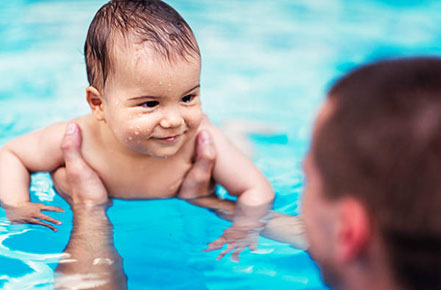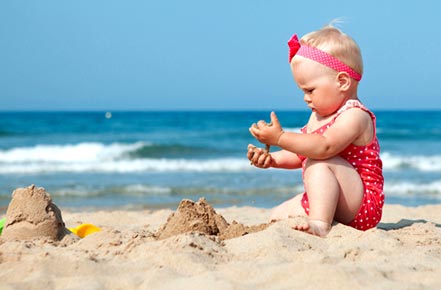After delivery, all those aunts, neighbors, grannies that you didn’t see for a long time, suddenly find their way back in your life. They all want to see and touch the kid, check who she or he looks like and so on. Additionally, they come armed with all sorts of pieces of advice, determined to tell you everything about raising a child. Even if at the beginning you feel like not giving importance to their words by the time they all leave you with realization that they did nothing but create additional confusion.

The same goes with proper care of new baby bottles. One group of these know-it-all relatives is kind of germaphobes and they think that sanitizing baby bottle after each use is necessary. Another, however, disagree saying that babies also have to develop an immune system and that frequent disinfection won’t do them good.
So, what is it? The truth is somewhere in the middle. When we are talking about newborns considering that their immune system is almost nonexistent it is very important to sterilize bottles including baby bottle nipples pretty often. You should do it until baby’s first birthday. With older kids, you can be more relaxed.
It might seem like annoying work, but keep in mind that nothing is too complicated if it means having a happy and healthy child. We want to point out that it is a controversial topic and there are experts who claim that while it was important in the past, nowadays it’s not the case . However in our experience it is not something that will take half of your day, there are ways of doing it quickly and it’s always better to be safe than sorry.
Types of Sterilizing
It’s worth mentioning that there are different ways to sanitize items and we will discuss them in a text that follows. Take care about which type of bottle you have because some can get damaged if they are sanitized in a wrong way or too long.

Boiling
Boiling is the process where water is heated until it reaches the boiling temperature. It is a quite simple procedure to sanitize the products. When boiling baby bottle you need to put a pot with enough water on a stove. Place all equipment bottles, teats, etc. that you previously washed in water. After water has been boiling for some time, take the pot off the stove and let it cool. Make sure that you take the bottles, teats, and lids with clean hands. Many new mothers are wondering for how long to boil water to sterilize. Experts we discussed this with advise doing it for at least 5 minutes, although many say that you can’t go wrong if you do it twice or even three times longer. If you don’t plan on using them right away, dry and put them in the fridge to avoid possible contamination.
Using Bottle Sterilizer
Sanitizing equipment is even more necessary when you are feeding your kid with a formula. But sterilizing all equipment and everything else every time manually can be rather annoying. Therefore, a lot of moms prefer using bottle sterilizer. There are two types, steam and microwave sanitizer. These appliances are easy to find and also quite easy to use and many parents opt for a steam-based option. It is a very convenient and versatile little machine as you can put more than one bottle and additional items at the same time. Another thing is that it has the capacity of destroying all germs without baby bottle soap or any other products. They come with a built-in dryer option which is great as it prevents any bacteria to enter bottles while they are drying. Most common sterilizer temperature is about 121 Celsius which equates to 250 Fahrenheit.

Sterilization Chemicals
Another way of disinfecting your child’s feeding items is by using sterilization chemicals that come as liquid or tablets and need to be mixed with water. One example of this product is bleach. All parts need to be thoroughly washed before making the solution. Each of the chemicals comes with instructions so it is important that you read through them carefully. Once you made a solution, place the bottles, teats and other parts inside making sure that everything is completely soaked in water. According to most of guidelines, the equipment should stay in the solution for about 30 minutes. However, it is perfectly safe to leave them longer if you don’t need them. Avoid rinsing solution as this increases risks of contamination. Potential remaining chemicals will evaporate during drying process.
Microwave Oven
Who said that microwave is used only for heating your favorite frozen dish or making popcorn? You can, of course, use it for quick and efficient disinfection of baby’s eating equipment. Pediatricians say that best sanitizing process is done by washing bottles in dishwasher but when you need them quickly, microwave works just perfectly. Make sure that microwave is completely clean before putting half-filled bottles inside. Also, be careful not to put nipples and other little parts directly in the microwave. Put them instead in a safe bowl filled with water. Process of microwaving baby items shouldn’t last longer than a minute or two.
How to Sterilize Different Types of Bottles

We discussed above some of the ways how to sterilize baby bottles. One thing that requires attention is the material used for baby bottles. The methods that involve heat from microwave or steam and boiling are good for glass and heat safe plastic. The good news is that lot of baby equipment now is made of special borosilicate glass so if your kid’s equipment is made of it there are no reasons to be worried. However, some manufacturers still use plastic that can melt or release toxins when exposed to high temperatures so check to be safe. In this case disinfection with cold water with chemicals is better option.
How to Sterilize Glass Bottles
It is quite easy because as we already mentioned you can do it with steam or microwave bottle sterilizer. In these busy times, many parents are happy with having this option because it is super efficient and the whole process is finished in few minutes. They are not just easy to use but also cheap, thus affordable for any budget. Other ways of disinfecting glass baby bottles are by boiling or washing them in a dishwasher.

How to Sterilize Plastic Baby Bottles
Like we already mentioned this depends on type of plastic your equipment is made of. There are types of plastic that are heat resistant and in this case, it is safe to sanitize them same way as you would do with those made of glass. If this, however, is not the case then the safest way to do it is in a chemical solution made with cold water. One benefit of cold water solutions is that you can use them as many times as you need within 24 hours. However, bottles can absorb the smell of chemicals you use so a baby might reject a bottle because it smells funny.
How Often to Sterilize Baby Bottles
Now we enter a controversial part of the topic because there is clear disagreement about how often to sterilize baby bottles. As we mentioned some pediatricians claim that doing it isn’t necessary, except once before the first use. After, they say it is enough that you wash them regularly and that’s it. Nevertheless, experts we consulted insist that disinfecting baby equipment plays an important role in avoiding slightest possibility your kid gets some of bacterial infections. While your baby is still little repeat this process daily. As your kid grows there is no general rule. You can do it now and then, like for example once a month to be on a safe side. But if a child is recovering from cold then regardless of age do it as frequently as possible.
How to Clean Baby Bottles
While you can make a decision regarding disinfecting, cleaning is not optional. Washing each part thoroughly is mandatory And if bottles and nipples are dishwasher safe simple put them inside and wash. Another option is to wash all the bottles and baby bottle nipples by hand. Before doing that you have to wash your hands with soap and water for about 20 seconds. Then put equipment in a washing basin with soap and warm water. You shouldn’t put them directly in the sink because bacteria can reach the items. Use the long brush for cleaning bottles inside.
How to Clean Bottle Nipples
If you want to know how to clean bottle nipples keep in mind that everything that you read about cleaning bottles counts for baby bottle nipples as well. The only thing you need to remember when you are hand washing them, squeeze the water through the nipple. That way you are sure the nipple is properly cleaned.
Conclusion
As we mentioned several times there isn’t such thing as a firm agreement regarding sterilizing baby feeding items. Nevertheless, after hearing all the expert opinions we would recommend that you do it if not each day, maybe once a week. Whatever you decide we hope that you found some useful info while reading this text. For more information check out parenthoodroutine.com.










